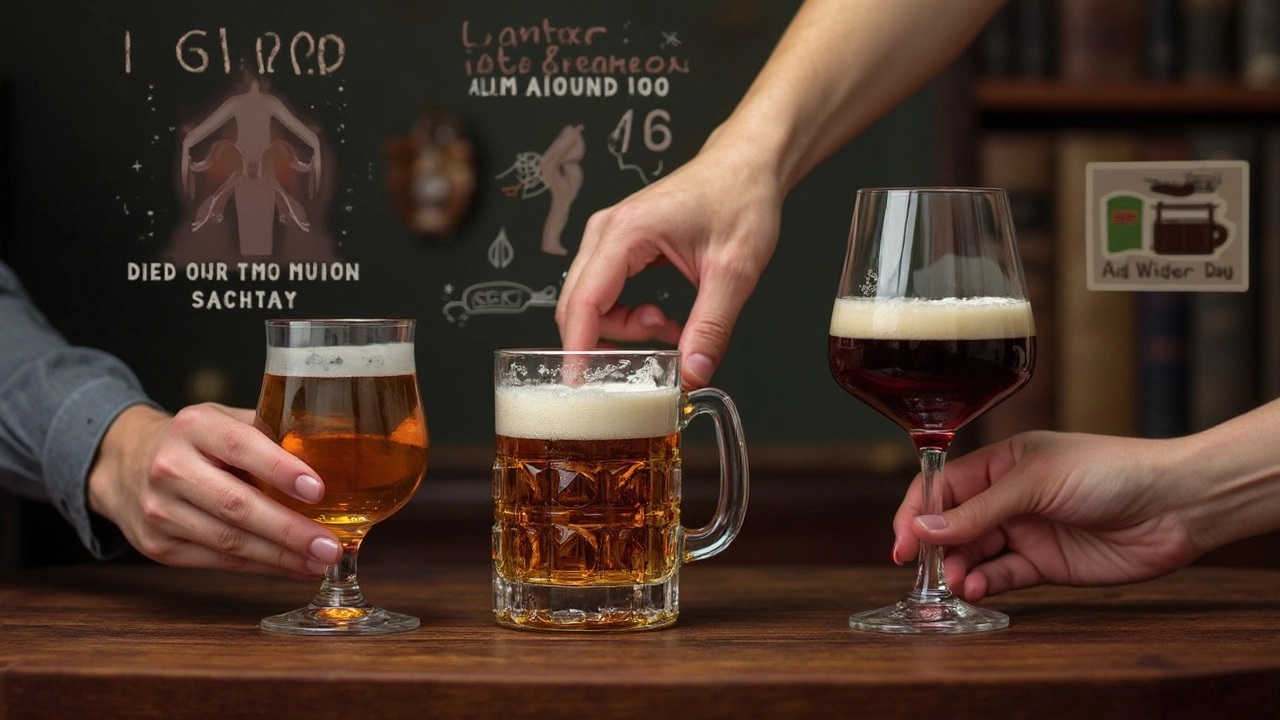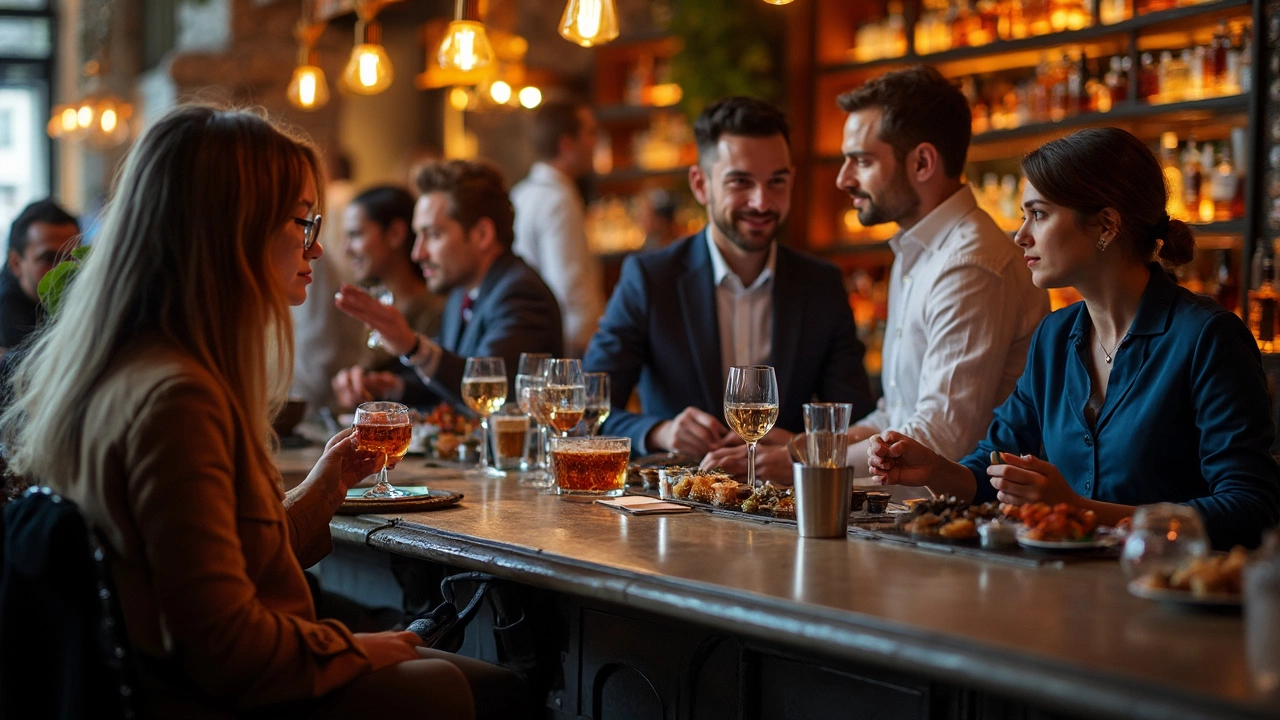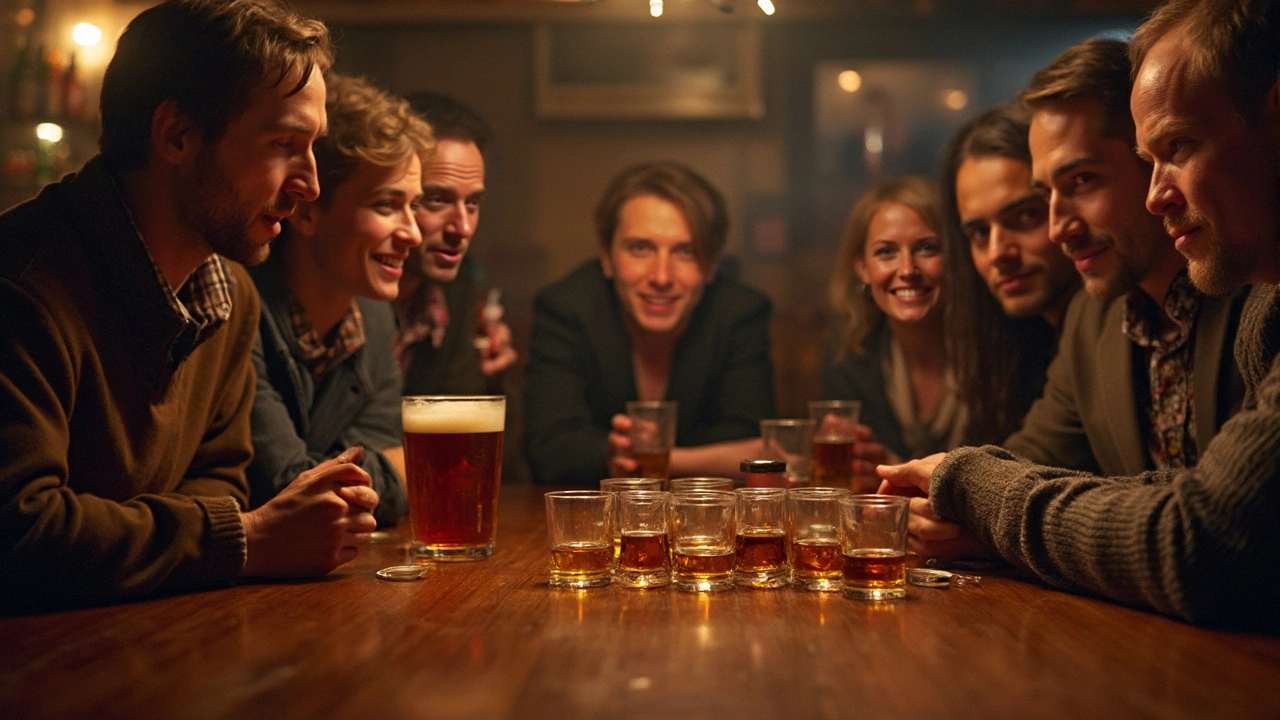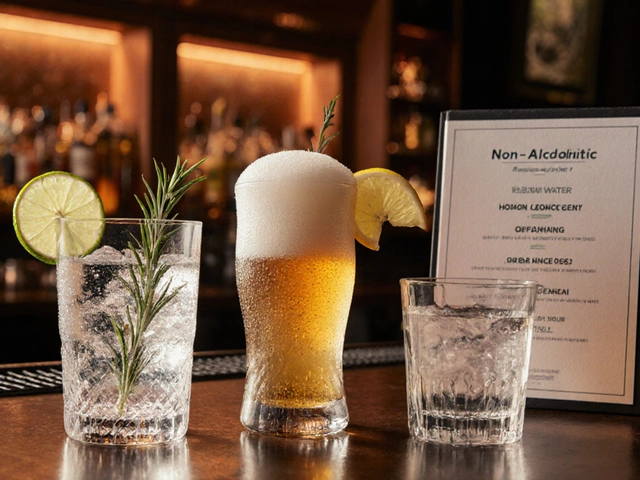People love to claim that spirits—vodka, whiskey, gin—hit harder and get you drunk faster than any other alcoholic drink. But is it really the booze itself, or is something else at play?
First up: spirits pack way more alcohol than beer or wine, ounce-for-ounce. That’s not a sneaky trick—it's just pure numbers. A shot of 40% ABV vodka? That’s a bigger punch than your average beer, so if you drink the same amount, it’s like bringing a bazooka to a water balloon fight. That’s why folks feel buzzed quicker at spirits tastings or cocktail parties.
But here's where things get interesting: how you drink plays a massive role. Shooting back neat spirits on an empty stomach is asking for a quick headspin, but a slow sip paired with food takes the edge off. If you find yourself getting way too tipsy at a tasting event, chances are the speed and empty stomach are the real culprits—not some mystical ingredient in the whiskey.
- What Are Spirits, Really?
- Does Proof Equal Potency?
- How Drinking Speed Changes Everything
- Mixers, Sips, and Surprises
- Tips for Smarter Spirits Tastings
What Are Spirits, Really?
Spirits are the big guns of the alcohol world. Think vodka, whiskey, rum, gin, tequila—these aren’t just stronger; they’re made in a totally different way from beer or wine. The magic word here is spirits. That means booze that’s been distilled, not just fermented.
Here’s how it works: Beer and wine are made by fermenting grains or fruits. Yeast chomps up sugars and turns them into alcohol. But spirits go through another step—distillation. This cranks the alcohol content up by separating the alcohol from most of the water and other stuff. That’s why a shot of whiskey feels way punchier than a glass of chardonnay.
How strong are we talking? Check out this quick comparison:
| Beverage | Typical ABV (Alcohol by Volume) |
|---|---|
| Beer | 4–6% |
| Wine | 12–15% |
| Spirits | 35–50% |
That’s not just a little stronger—it’s up to ten times as much alcohol per ounce compared to beer. No wonder things get wild faster when you’re sipping on an old fashioned.
As David Wondrich, one of the world’s go-to cocktail historians, put it in an interview:
“Distillation takes the alcohol where fermentation can’t go—spirits are the pure, punchy core of what booze can be.”
Not all spirits are created equal, though. Regulations in most countries say anything labeled as a spirit has to be at least 20% alcohol by volume, but most are much higher. That’s why bartenders are careful about pours and why spirit tastings are tiny sips, not full glasses—this stuff means business.
- Spirits are clear or dark, depending on the ingredients and aging process. Whiskey and rum come out darker, vodka and gin usually stay clear.
- They’re made all over the world, each type with its own unique traditions—Scotland with whisky, Mexico with tequila, the Caribbean with rum.
- Even the glassware matters—small glasses let you savor the flavors and aroma instead of just knocking it back.
So, spirits aren’t just “regular alcohol but more.” They’re unique, with a higher punch, made with old-school skill and science. That’s why they stand on their own at any tasting table.
Does Proof Equal Potency?
Alright, let's get clear about one thing: when people talk about alcoholic "proof," they're really just doubling the alcohol by volume (ABV) percentage. For example, 40% ABV means 80 proof. Simple math, but so many folks mix this up. The main question here is, does higher proof—like what you find in spirits—mean more buzz?
Short answer? Yes, higher proof equals more alcohol per sip. But it doesn’t mean you automatically get drunker if you pace yourself. The problem? Nobody paces themselves with shots. Here’s a quick comparison to make it obvious:
| Beverage | Standard Serving Size | ABV (%) | Alcohol Content (oz) |
|---|---|---|---|
| Beer | 12 oz | 5% | 0.6 |
| Wine | 5 oz | 12% | 0.6 |
| Spirits | 1.5 oz (shot) | 40% | 0.6 |
Notice something? Each standard drink type above has about the same amount of pure alcohol (0.6 oz). But drinking spirits is like putting all your alcohol in a shot glass instead of spreading it out. Takes a lot less time to hit you if you down it.
Also, spirits can sneak up on you. That tiny glass packs way more of a punch, so it’s easy to lose track. As Dr. George Koob (director at the National Institute on Alcohol Abuse and Alcoholism) says,
"People often underestimate the speed at which spirits can raise blood alcohol levels, especially if consumed quickly and without food."
If you treat one shot of whiskey like you treat a pint of beer, you’re going to have a very different night. Proof is power, but pacing and awareness are the real game-changers.

How Drinking Speed Changes Everything
If you’ve ever raced through a couple shots or slammed a cocktail, you’ve seen fast results. The speed you drink spirits is a total game-changer for how drunk you feel. It’s not a myth—science backs this up over and over.
Here's the deal: your body can only process about one standard drink per hour (maybe a bit less if you’re smaller, a bit more for larger folks). Throw back a bunch of spirits in ten minutes and you go way past what your liver can handle at once. The alcohol backs up in your bloodstream, and you get drunk faster—and usually more intensely.
If you sip slowly, you give your body a fighting chance to break down what you’re drinking, so you stay more in control. At spirits tastings, experts often encourage tasting, not drinking. There’s a reason for that.
“Consuming alcohol too quickly can easily lead to a rapid spike in blood alcohol concentration, overwhelming your system far more than moderate, paced drinking.” — Dr. George Koob, National Institute on Alcohol Abuse and Alcoholism
Let’s look at how speed changes blood alcohol concentration (BAC). Here’s a quick side-by-side comparison:
| Drinking Style | Amount Consumed | Time | Estimated BAC After 1 Hour (150 lb adult*) |
|---|---|---|---|
| Fast (2 shots in 10 minutes) | 2 oz (2 shots) 40% ABV | 10 minutes | 0.05 |
| Slow (2 shots over 1 hour) | 2 oz (2 shots) 40% ABV | 60 minutes | 0.03 |
*Based on general body weight charts, actual BAC varies by sex, hydration, food, and more.
Notice the jump? Just chugging the same spirits can double your BAC. That’s why you feel hammered in a flash when you're not pacing yourself.
- If you want to taste without getting smashed, try alternating spirits with water.
- Never go to tastings hungry—food slows absorption a lot.
- Give yourself at least 15-20 minutes between samples, especially if you’re small or new to high-proof drinks.
The bottom line is that how you drink matters just as much as what you drink. It’s about pace, not just proof.
Mixers, Sips, and Surprises
Here’s where people start to get tripped up: it’s not just the spirits themselves that fuel the buzz, but what you drink them with. Add a mixer, and things get complicated—sometimes in ways you wouldn’t expect. For instance, if you mix vodka with soda or juice, you might end up drinking more alcohol without realizing it, just because the taste feels smoother and there’s no burn to clue you in. That’s how the classic ‘just one drink’ can turn into three before you know it.
Then there’s the science behind mixers. Sugary sodas and energy drinks don’t slow down alcohol absorption. In fact, some research points out that mixers with caffeine (like Red Bull) can trick you into feeling less drunk than you actually are. That’s a recipe for bad decisions and nasty hangovers. Club soda and tonic don’t mask the buzz in the same way, but they still go down smooth, making it easy to underestimate how much you’re drinking.
Let’s talk about sipping: people say, “Sip, don’t shoot,” and there’s actually logic behind it. Taking small sips gives your body and brain time to process how much alcohol is in your system. Those who rush for the quick hit (shots, anyone?) will feel the effects much faster and harder than the slow sipper. Restaurants actually pour smaller servings of spirits for a reason—they want you to enjoy the flavors, not end up face down in the breadbasket.
Surprises? Here’s a big one: carbonated mixers—like soda or tonic—can speed up alcohol absorption because bubbles push the alcohol into your bloodstream faster. Not kidding, researchers from the British Medical Journal confirmed this ages ago. That fast rush catches most people off guard, especially during tastings or cocktail nights.
If you want to actually taste what you’re drinking and see how it plays out in your system, ditch the sugary mixers and take it slow. Notice the flavors, pay attention to how you feel—the more mindful you are, the less likely you are to hit that tipping point where a fun evening turns into pure regret.

Tips for Smarter Spirits Tastings
If you've ever stumbled out of a spirits tasting event and thought, 'Wow, that escalated quickly,' you're not alone. High-proof drinks can sneak up on you. Here are some straightforward ways to keep things fun—without letting things get out of hand.
- Pace Yourself: Sipping is the name of the game. Don't shoot back your samples, no matter how small the pour. Your body isn't a machine—give it time to process each sip. It usually takes about one hour for your body to handle a standard drink.
- Eat Before and During: Having food in your stomach slows alcohol absorption. The difference is real: studies show that drinking on a full stomach can lower your peak blood alcohol concentration by up to 30% compared to drinking on an empty stomach.
- Know Your Pour: Tasting pours might seem tiny, but they add up fast. Keep track of how many samples you've had. It's easy to forget you've just crushed the alcohol equivalent of three cocktails in half an hour.
- Hydrate: Water is your best friend. Alcohol dehydrates you. Try alternating between water and spirits, or set a goal to finish a glass of water every one or two tastings.
- Skip the Mixers (Sometimes): Sugary mixers can make it easier to lose count of how much straight alcohol you’re actually drinking. When tasting, stick with neat spirits or water and you'll have a better sense of what you're consuming.
To put things into perspective, here’s a breakdown of average alcohol content by drink type:
| Drink Type | Serving Size | Average Alcohol (ABV %) | Approximate Pure Alcohol (oz) |
|---|---|---|---|
| Spirits (Whiskey, Vodka, etc.) | 1.5 oz | 40% | 0.6 |
| Wine | 5 oz | 12% | 0.6 |
| Beer | 12 oz | 5% | 0.6 |
Notice something? The standard 'drink' is about the same amount of pure alcohol, even though the cup sizes look totally different. It’s easy to forget during a lively spirits tasting, but keeping that in mind makes a world of difference.
Finally, know when to call it: if you feel yourself getting tipsy, take a break. There's more to enjoy than the buzz—like flavor, aroma, and maybe even bragging rights for remembering the whole event.


